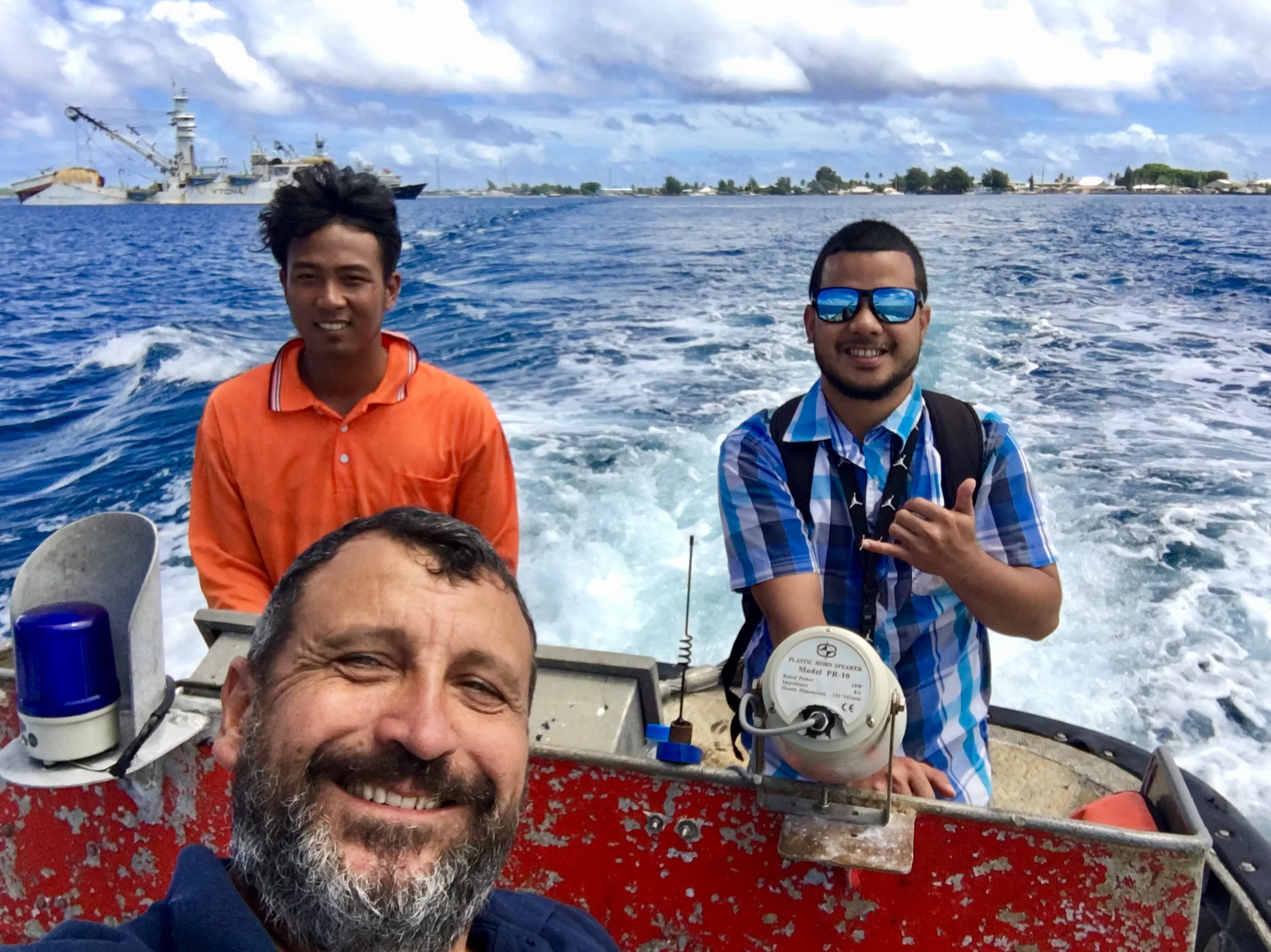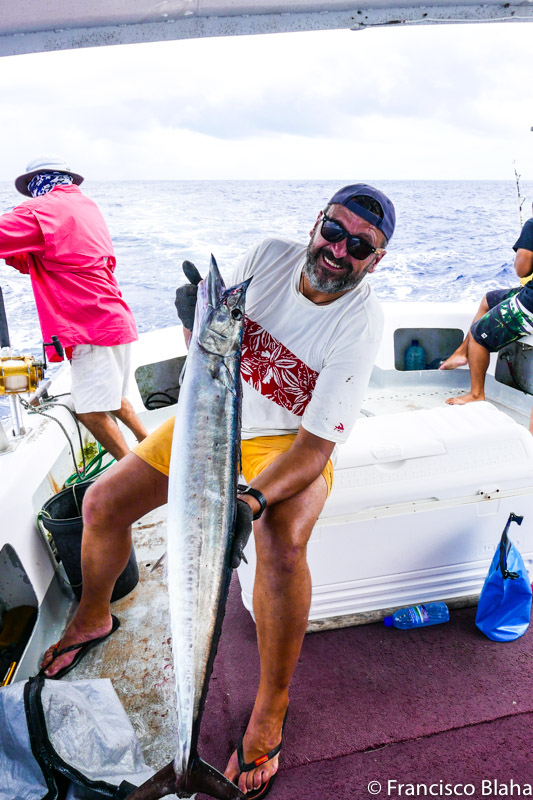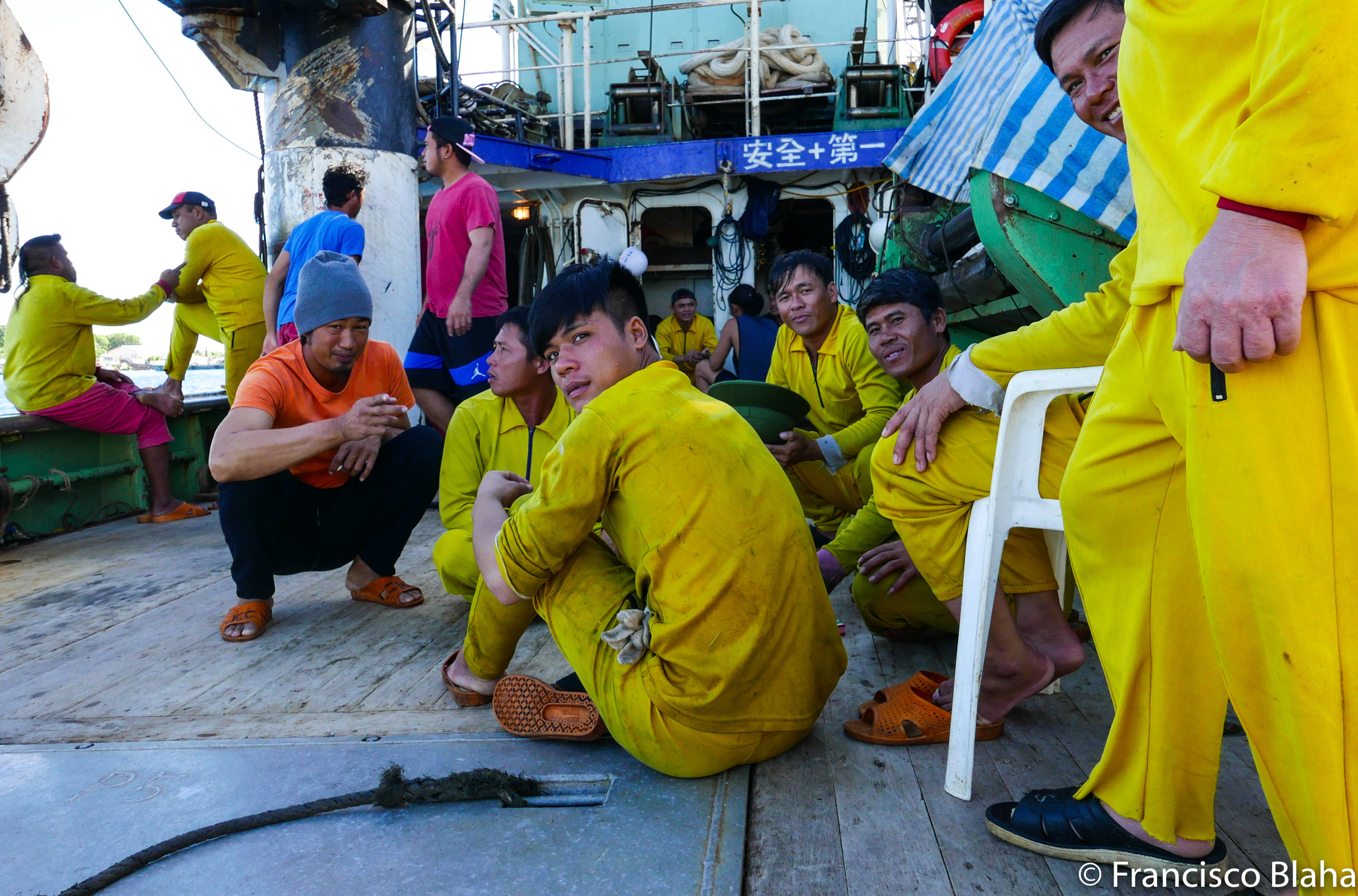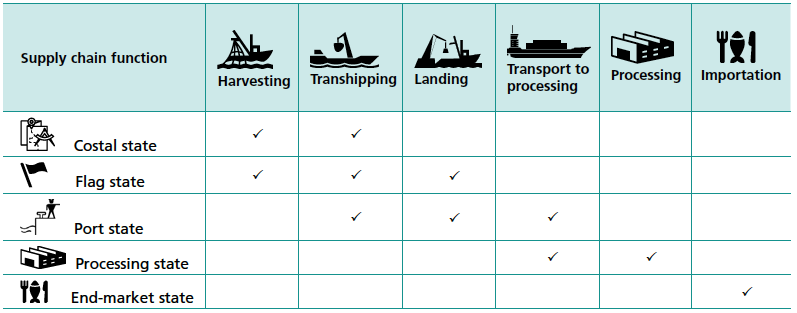Back in December I wrote about what I do in Majuro as a NZ MFAT paid Offshore Fisheries Advisor to the government of the Marshall Islands, as I just finishing my 3rd four week visit, so here is update of what we have been up to in Majuro.
My favourite advance is the implementation of our Vessel Inspection Plan grounded on PSM.
Operationally the plan is set up under the following scheme; the vessel arrival request gets loaded into the MIMRA IMS under a unique identification in order to be processed by Compliances Officer. Then, a procedural intelligence analysis (following a decision tree) is used for the determination of port use authorization, based on assessing the vessels trip information based on information available to the Compliance officers through FFA RIMF, regional VMS and FIMS.
This info check includes among others: FFA VoI, risk index and VMS track, Licenses for the areas fished, eForms information (when available) and eObs (when available). These information sources provide the required intelligence, which we compile on an Arriving Vessel Intelligence Report (AVIR).
The arrival is then approved in the port arrival system, which communicates the approval back to the agent and the boarding is scheduled and the boarding logistics set up. In the case of various arriving on the same day, the order of boarding is established in accordance with the FFA Compliance Index (1st green vessels, then yellow, then red... i like the idea of incentivising compliance by clearing the good people first).
The boarding officers bring the AVIR as to guide any investigation they want to pursue on the vessels. Only after clearance by the boarding and inspection team, the “Port Use” is authorised and the transhipping (or sometimes unloading) monitors (off duty observers) come over to monitor operations and account volumes. Only once they are on board, the operations can start.
We are not totally there yet (good things take time) as some elements are not totally in final form, for example:
Off to clear a carrier with Melvin
Forms: Are still in draft since they will be incorporated into MIMRA’s IMS Portal along the policy of having the PSM process standardised and electronically based. At this stage the e- vessels arriving portal is functional, and the development of the Arriving Vessels Intelligence Report (AVIR) is being incorporated.
Volumes monitoring: at this stage monitors (land based observers) either evaluate the volumes transhipped via educated estimations or in some cases using winch scales that the agents set up. MIMRA already started the procurement of our own set of scales to bring on board. These would be able to connect to tablets, so monitors can accurately record the weights of the fish being transhipped and their focus can be aimed to monitor catch composition in the net loads being transhipped.
Departure Clearance Inspection: at the present we don’t have the full capacity in terms of personal and resources to fully implement this important step every time a vessel laves. While in principle staff could be recruited and trained, there is presently no physical office space to host them, this situation if to change as soon as our new MIMRA building is ready (planned for August 2018) so we can close the circle of the vessels activities here in Majuro.
Part of importance of the vessels clearance is that we know then if there is any fish left on the vessel when they go out, or in the case of carrier how much fish is there, from which donor vessels and where is it going.
The confirmation of volumes is vital because the receiving country of the carrier, lets use Thailand as example, in it role as a signatory of PSMA is responsible for assessing the legality of the fish in the carrier, but they have rally little chances to access the compliance information of vessels that fish ¼ of the world away, furthermore… how they know that the carrier did not stop half way there and got unreported fish from someone else, mixed with the reported fish and try to launder it that way.
If the Thai DoF was to access our arriving and departing vessels clearances reports for legality and volumes, once the fish is “weight in” at the factories there, they verify if what we check leaving here, is what they are getting there
On the other side of the coin, we in the Pacific only have estimates of fish that has been caught via logsheets, observer estimates and soon the scales. Hence having access to the verified “weight in” values would be a unique way to confirm the accuracy of logsheet reporting and our transshipment estimations, which in turn could allow for better-targeted inspections on vessels that are potentially misreporting and/or underreporting their catch.
So why we don't swap that data, and we have one of those win-win situations?
Hold my beer…. and watch the space ;-)
---
At a personal level it has been quite an interesting 4 weeks.
Firstly i'm staying at house of my my friend Dr. Sergio Bolasina (in the picture to the right) and his family... we know each other since 1983 when we started university and been friends ever since, a friendship nourished by a very cynic sense of humour and the love of music. He started a position as the head of mariculture here at Marshall Islands College last January. Besides the pleasure of living with his family (which soothed the pain of missing my own one) I still pinch my self when I see him around... of all the places in the world we could have ever think about living when we lived in Mar del Plata, Argentina... Majuro definitivelly wasn't in the list!.
Secondly, I got revive my old Search and Rescue swimmer skills when saving a drowning man a couple of weeks ago... I was walking home along the road by the lagoon near Lojkar, and I see people screaming and pointing into the ocean. Everything happened really fast after that... it was obvious that a man was drowning over 100 mt away, then the trained instinct kicks in and i had a long swim out while measuring the current, once I got to the man it was easy to see that he was drunk and barely breathing, so I stabilised him. He says something about another one yet I don’t see anyone else... the current is pulling us, so I tackle a angle that would get us back to shore in a accessible area. Luckily we land there, he spits some water but is ok and quite shaken. People come to us... some cry, others hug me. All seems to happened so fast. Someone handle me back my bag, a bit confused I walked home, had a shower and started to think about how much could have gone wrong... it was all very intense, but I'm thankful to my training over 30 years ago and my love of swimming. We both got to live another day.
Thirdly, we had a well know documentarist following our work for 3 days, and this is all a bit nerve wrecking (even if authorised by the management) as one does not want to be portrayed in light of someone else angle or agenda. My job is based on the trust people have in me if that is ruined, I;m ruined. As I said in an interview last year: I'm just a fisheries specialist that provides technical and practical advice to countries and organizations. I don't take sides in the fisheries arguments, we all need to do better... end of story. But I'm a humanist, and I believe that only people can me make the difference, yet as long as everyone thinks that only their views are the only truth, we all fu*kt.
And finally going fishing with the family of Beau, one of MIMRA's fisheries inspector near Arno Atoll... We work with IUU fisheries during 6 days a week and then go catching fish on the 7th... can be monothematic... but we love it.





























